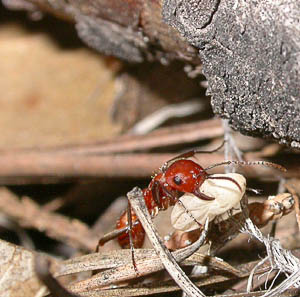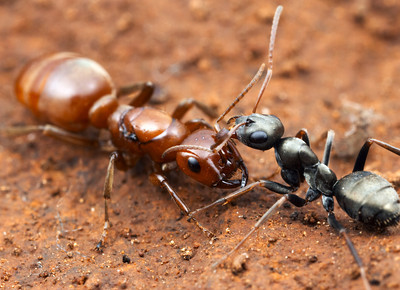Slave Making Ants
Biology 342 Fall 2010
By Zina Jenny and Joseph Perry
Ontogeny
How do slavemaking colonies work?
It's impossible to address the entire behavior of slave making in ants through following the development of one ant. Rather, to understand the systems at work, we'll describe the ontogeny of a slave-making hive.
So how does an actual raid play out?

|
Let's follow an individual Polyergus breviceps as she goes throughout the day. After she activates in the morning, she will interact with other passing ants on her way through the nest. Through tallying and comparing rates of encounters with other ants, she decides that today, she'll be a scout. She leaves the nest in search of a neighboring colony. Sometime during the day she encounters exactly what she's looking for; a Formica argentea hive. Immediately, she makes a beeline back to her colony, trailing a pheromone behind her. Other scouts will walk the trail to confirm the existence of the F. argentea colony, trailing their own pheromones, and after the pungency of the path grows strong enough, the rest of the P. argentea group at the nest and follow the trail to the host nest to capture larvae to be reared as slaves. |
